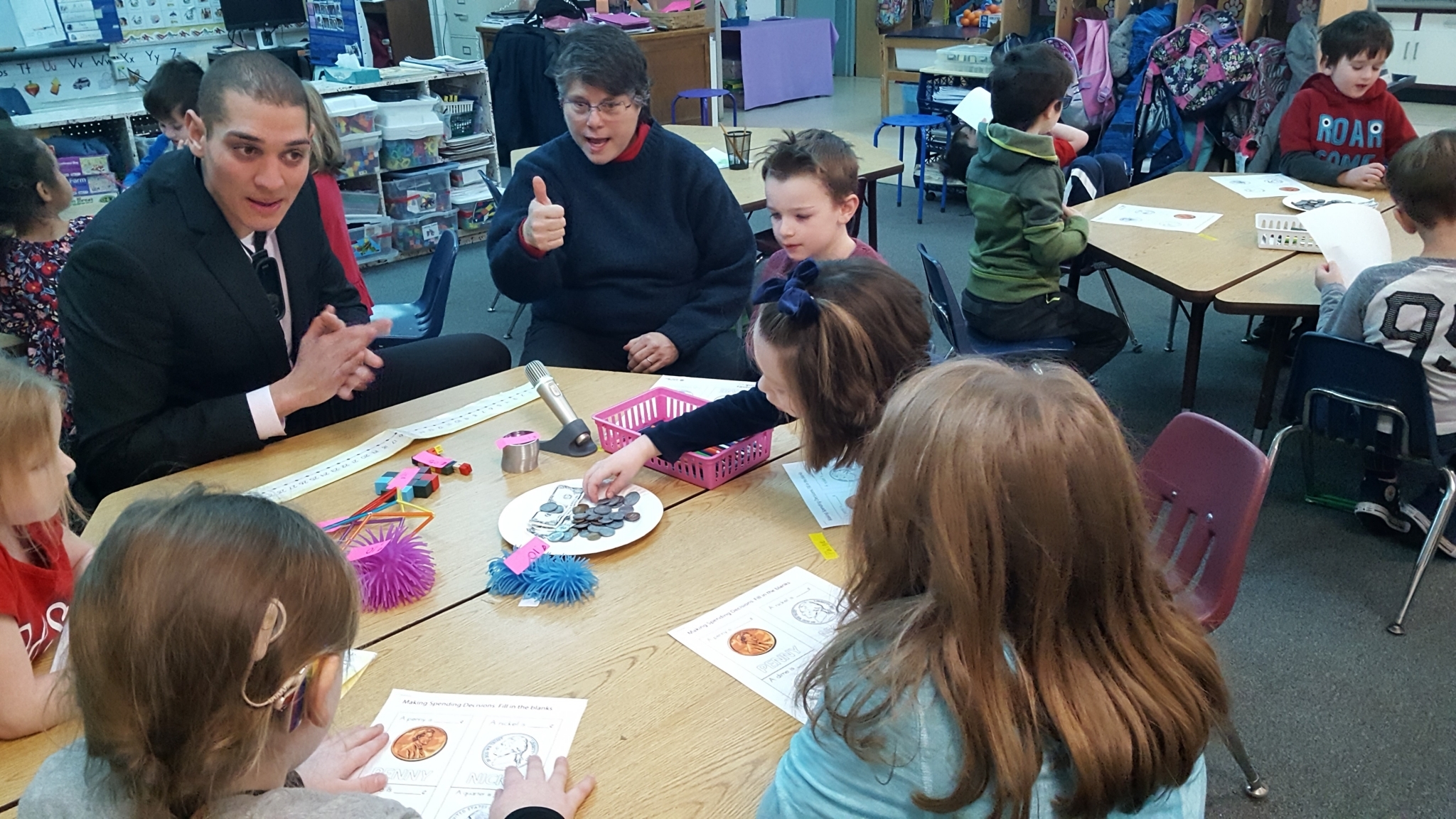
Published December 2, 2019
Tips on Teaching Financial Literacy to Children
When it comes to money, people often reflect at one time or another and wish they’d learned more about financial topics in school that may have helped later on in life. The fact is, there’s a lot to learn when it comes to finances.
That’s why Community Bank runs financial literacy programs in various communities where CBNA team members visit local schools, libraries and other non-profit organizations. Checking in on financial literacy from time to time is critical to building a strong foundation for smart spending (and saving) in the future.
Start Small
Just as you do with colors, numbers and letters, make it a priority to teach the characteristics of money to your kids early on. Start with coins and simply being able to identify them. Over time, start adding the appropriate values. Your first goal should be teaching your kids the most basic concept: Things cost money.
Make it a Game
A wonderful way to keep kids engaged is through games, and the same goes for teaching money. Using toy money (which you could even create yourself), have them color it and identify each denomination. Eventually, you can start charging them for things like juice or a snack. Once they understand the concept, this could also work to help keep them away from things you might not want them to have. You can even do this with a “credit card” where you give it a limit just like grown-ups have.
“Oh, I’m sorry. You don’t have enough money to buy that candy. But you have plenty for this apple!”
Show and Tell
Take the opportunity to explain a purchase to them as it happens in real time. If it’s cash, let them count the money with you as you hand it to the cashier. You might even do this in the aisle by picking up a product, asking yourself aloud if you can afford it, and then figuring that out in front of them. Whether you can or you can’t, the show-and-tell method is tried and true.
Paying on a card can work, too, but this requires a bit more explanation.
Be the Bank
Before they have jobs and bank accounts, children will still want to spend money. Whether it’s from their allowance or from birthday/holiday gifts, make yourself the bank of that money. When they want to buy something, lay it out for them. “What you want is $X, and you have $Y.” Talk them through the decision and see where it takes them, emphasizing what the purchase will do to their “account.” It may be a harsh lesson learned when they can’t afford the thing they really wanted because they bought something else instead.
This is where an old classic—the piggy bank—can be an incredibly useful tool. The money in it is theirs to see, touch and count. They can use that money, and each use becomes a learning experience.
Make it Official
When it’s time for them to have an account of their own, don’t let them do it alone. Quiz them on their understanding of what they’re getting into and then fill in the gaps in that understanding. Make sure they understand basic terms, warn them of common mistakes like over-drafting and then make sure they understand the consequences. It’s a big responsibility, so make sure they’re ready for it.
Explore our Financial Literacy Hub and our blog for content that helps you make money decisions confidently.

Join our team
We're a collection of big-hearted individuals, working with our customers and our communities to make life better.


